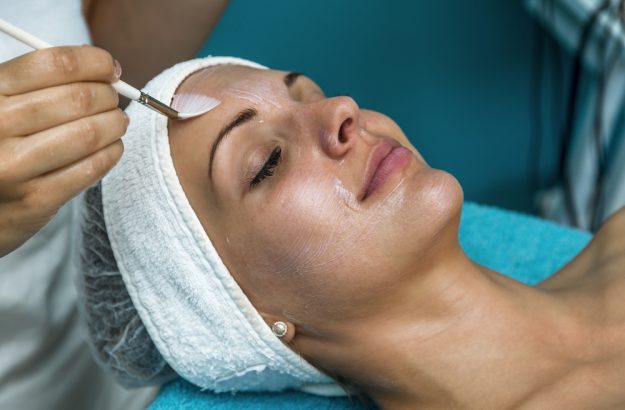
If you’re a fan of Sex and the City, you probably remember when Samantha had an anti-aging chemical peel that left her red-faced before a big event.
However, apart from this pop-culture reference, chemical peels remain a mystery to many individuals, who are unaware of how a chemical peel could enhance their skin and appearance.
They may even wonder, “What exactly is a chemical peel?”
Continue reading to learn all about the types and benefits of chemical peels, and what patients can expect should they decide to undergo treatment.
What Is a Chemical Peel?
A chemical peel is a non-invasive treatment that involves applying an acidic or low pH chemical solution to skin to promote cellular renewal.
As dead skin cells are sloughed off, a clearer, smoother, and more radiant complexion begins to emerge.
What Are the Different Types of Chemical Peels?
Chemical peels can vary according to depth of penetration and are typically categorized as superficial peels, medium peels, and deep peels.
Another factor that can alter chemical peel capabilities is the peeling agent. While glycolic acid can penetrate deeply and is ideal for anti-aging, lactic acid is recommended for dry skin.
Likewise, a beta-hydroxy peel, containing salicylic acid, provides anti-inflammatory and antibacterial properties to heal acne-prone skin.
Why Consider a Chemical Peel?
There are a number of benefits to undergoing a chemical peel.
In addition to being a non-surgical, non-invasive, and non-thermal treatment, a chemical peel can correct a variety of skin concerns.
In fact, it’s able to combat signs of aging, rejuvenate skin tone and texture, smooth wrinkles and lines, decrease hyperpigmentation, and increase radiance and clarity.
How Is a Chemical Peel Performed?
During a chemical peel, a prep solution is used to de-fat the skin. Next, the appropriate chemical solution is applied and remains in contact with the skin for several minutes.
The provider will assess skin to determine when the peel should be neutralized with a cream or solution. Additionally, a peel can be deactivated when a patient washes his/her face.
Finally, sunscreen and other post-peel products are applied.
Learn More About Chemical Peels
If you are considering a chemical peel, please call our office today to schedule a consultation with one of our highly skilled and experienced providers.
